Is Metro Cleveland Competitive?
James Trutko digs deep to find out how Cleveland stacks up against other metro areas in terms of job and business creation.
by James Trutko | May. 1, 2024 | 4:00 AM

Many Metro Clevelanders wonder how competitive the area’s economy is in creating jobs and businesses. It is possible to look at data from the Bureau of Labor Statistics (BLS) to compare the area’s performance against 11 other Midwestern metropolitan areas.
BLS’s Quarterly Census of Employment and Wages (QCEW) is based on actual business reports and not simply survey data. BLS also defines geographic areas in standard ways based on objective criteria, which allows a reliable comparison of various metropolitan areas, cities, counties and states. The QCEW data is often not used because reports lag by about six months.
The period from 2010 to 2023 offers a fair amount of time to assess Metro Cleveland’s ability to create jobs and businesses. Overall, Metro Cleveland finished 10th in job creation and ninth in business formation. Only Buffalo and Pittsburgh performed worse than Cleveland.
It is possible to provide a more nuanced look at Metro Cleveland’s position by separately analyzing the 2010-2019 recovery from the 2008-2010 Great Recession and the 2019-2023 COVID business collapse and rebound.
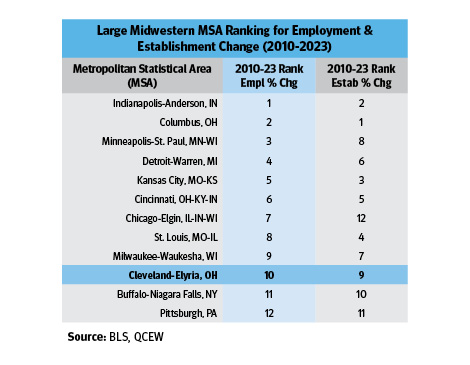
After the severe 2008-2010 recession, one would expect the Midwestern economies to bounce back strongly during the following 2010-2019 period, and they did. Overall, employment growth in the 12 economies averaged 13%, and employment in two areas exceeded 20%. But Metro Cleveland employment grew only 7% and finished 10th of 12 areas. Overall, the growth of business establishments averaged only 7%, but Metro Cleveland lagged with a mere 1% of growth and a ranking in second-to-last place.
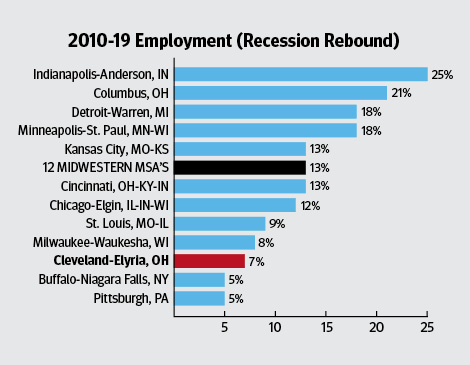
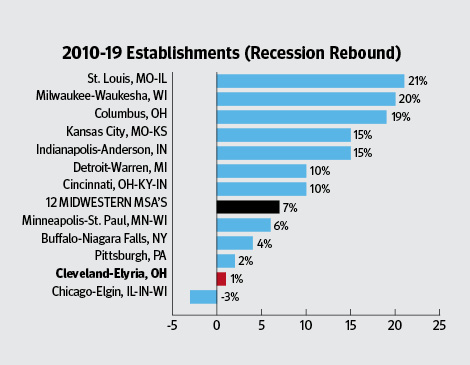
Today, there is sufficient data to understand the extent and nature of the economic recovery following a major business disruption. Despite the low unemployment numbers that many analysts report, employment fell by an average of 1% overall in the 12 Midwestern metro areas. Metro Cleveland employment decreased by 3% from 2019 to 2023, placing it 10th of 12 areas.
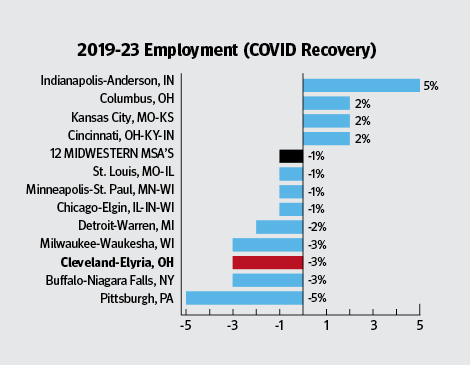
The story on business establishments is much different. There was a huge surge — 9% overall — in the number of businesses established after the COVID-related closures in the 12 metro areas. Metro Cleveland ranked seventh with an increase of 10% in new businesses. As a state, Ohio cities ranked at the very top, with Columbus and Cincinnati ranking No. 1 and No. 2, each tallying 18% new businesses established.
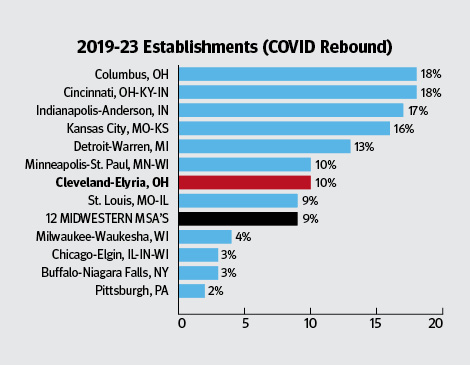
The business growth was part of a national trend in response to changing consumer preferences and habits driven partly by the pandemic and facilitated by new online technologies. Non-store retail businesses and transportation/warehousing grew as online orders surged. Home improvements surged as remote work grew and workers set up home offices. People sought new health care products and personal services as they redefined their priorities. Entrepreneurs had the time to develop plans, low interest rates to finance start-ups and available technologies to make it easier to start businesses. The major downside to the establishment growth was that it was disproportionately non-employer business growth, so Metro Cleveland, like other areas, did not see a huge surge in employment.
The reality is that Metro Cleveland has performed poorly in employment and establishment growth, but the recent surge in business establishments is a unique opportunity for job creation if the businesses are successful.
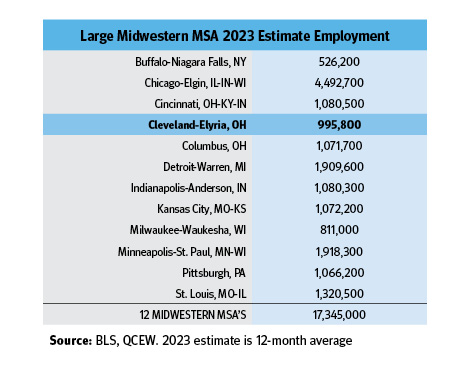
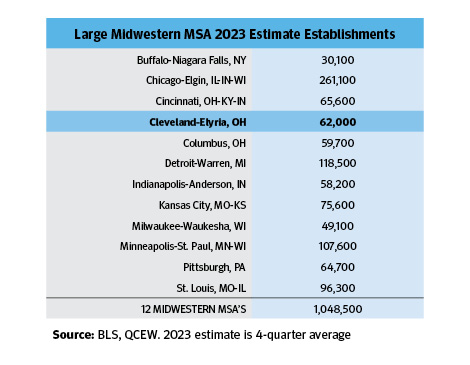
Trending
-
1
-
2
-
3
-
4
-
5










